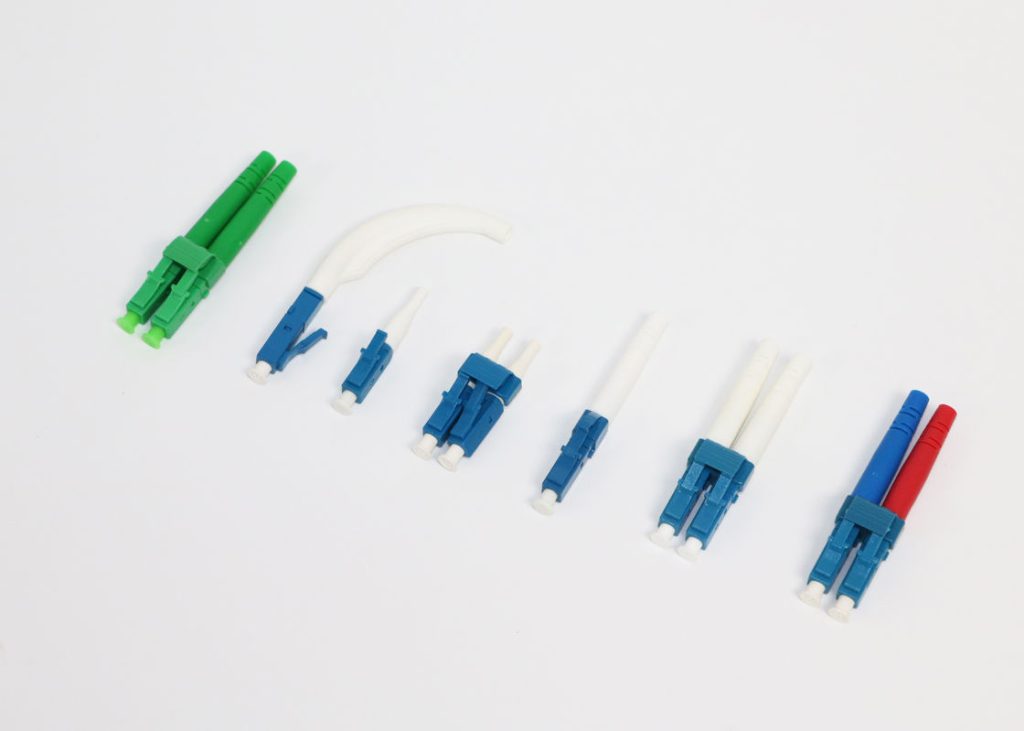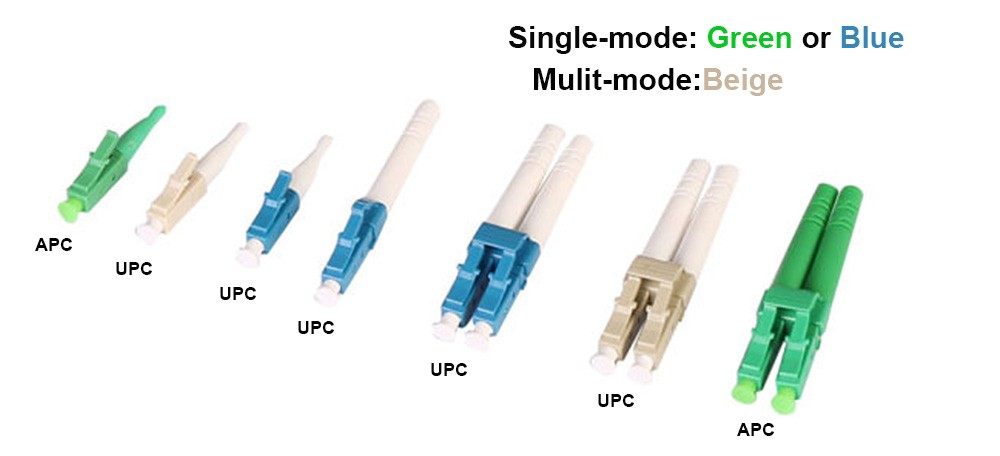LC fiber connectors are as popular as SC fiber connectors in fiber optic connectivity solutions. Here you can get good idea about the basis of lc connectors from beginner to expert. ( To learn SC Fiber Connectors you can view here )
What is LC Connector?
LC (Lucent Connector) fiber optic connectors are popular in fiber optic networking for their high-density and reliable performance. Designed by Lucent Technologies, LC connectors have become a standard due to their small form factor and ease of use. They feature a ferrule with a diameter of 1.25mm and utilize a push-pull mechanism for connection, making them a compact and efficient choice for modern optical networks.

Types of LC Connectors
- Standard LC Connectors: The most common type, used in a wide range of applications.
- Uniboot LC Connectors: Combine two fibers in a single connector body and boot, reducing cable bulk.
- APC LC Connectors: Feature an angled physical contact polish on the ferrule, minimizing back reflection and enhancing signal quality.
You can also categorized LC fiber connectors via fiber types and polishing types for LC fiber assemblies.

| Fiber Type | Polishing Type | Description |
|---|---|---|
| Single-mode | PC (Physical Contact) | Features a slight curvature for better core-to-core alignment, minimizing insertion loss. Common for basic single-mode applications. |
| Single-mode | UPC (Ultra Physical Contact) | Has a more refined finish than PC, offering lower back reflection (higher return loss), suitable for higher-quality single-mode applications. |
| Single-mode | APC (Angled Physical Contact) | Features an 8-degree angle polish for significantly lower back reflection, ideal for high-bandwidth and long-distance single-mode applications. |
| Multimode | PC (Physical Contact) | Common for general multimode applications, where alignment and lower insertion loss are essential. |
| Multimode | UPC (Ultra Physical Contact) | Although less common in multimode than in single-mode, UPC offers improved performance in certain multimode contexts, like in data centers or high-speed LANs. |
| – | APC (Angled Physical Contact) | Typically not used in multimode applications due to multimode fiber’s inherent modal dispersion and less concern over back reflection. |
Key Parameters of LC Fiber Connectors
- Insertion Loss: Ideally, LC connectors should have a low insertion loss, typically less than 0.3 dB.
- Return Loss: For standard PC polish, a return loss of >50 dB is common, whereas APC connectors can achieve >60 dB.
- Durability: The connectors should withstand hundreds of mating cycles without significant performance degradation.
- Operating Temperature: LC connectors should function across a wide temperature range, usually from -40°C to +75°C.
How to Use LC Fiber Connectors?
LC connectors are straightforward to use. They connect to LC adapter panels and equipment interfaces by simply inserting the connector until it clicks into place. To disconnect, pull back on the connector latch and pull out the connector.
Here below is a useful video for better understanding about LC connectors
Application of LC Fiber Connectors
LC connectors are versatile and used in various applications, LC Fiber Connectors are not used alone, usually, it is assemblied as LC fiber pigtails, LC fiber patch cord, or LC outdoor fiber patch cables.
including:
- Datacom and telecom networks
- High-density networking environments like data centers
- Fiber to the home (FTTH) applications
- Local Area Networks (LANs)
- Optical switches and routers
How to Choose LC Fiber Connectors?
Selecting the right LC connector involves considering:
- Application requirements: Data rate, signal strength, and environmental conditions.
- Connector type: Standard, uniboot, or APC based on space requirements and signal quality needs.
- Compatibility: Ensure the connector matches the fiber type (single-mode or multimode) and equipment interfaces.
LC Fiber Connectors vs. SC Fiber Connectors
In order to have a general understanding about the differences from them, You can refer to the below table to have a look at their key differences.
| Feature | LC Connector | SC Connector |
|---|---|---|
| Ferrule Diameter | 1.25 mm | 2.5 mm |
| Connector Type | Push-pull mechanism | Push-pull mechanism |
| Size | Smaller, more suitable for high-density applications | Larger, used in various applications but less dense |
| Insertion Loss | Typically <0.3 dB | Typically <0.3 dB |
| Return Loss | PC: >50 dB, APC: >60 dB | PC: >50 dB, APC: >60 dB |
| Ease of Handling | Compact design can be more challenging to handle | Easier to handle due to larger size |
| Application | Data centers, high-speed networks, FTTH | Telecom, datacom, CATV |
| Durability | Designed for high durability and repeated matings | Robust and designed for repeated use |
Conclusion
Both LC and SC connectors offer reliable performance, but the choice between them often comes down to the specific requirements of the network, including density, ease of handling, and space considerations. LC connectors are preferred in high-density environments like data centers due to their smaller size and compact nature, while SC connectors are valued for their ease of use and robustness in a wider range of telecommunication applications.